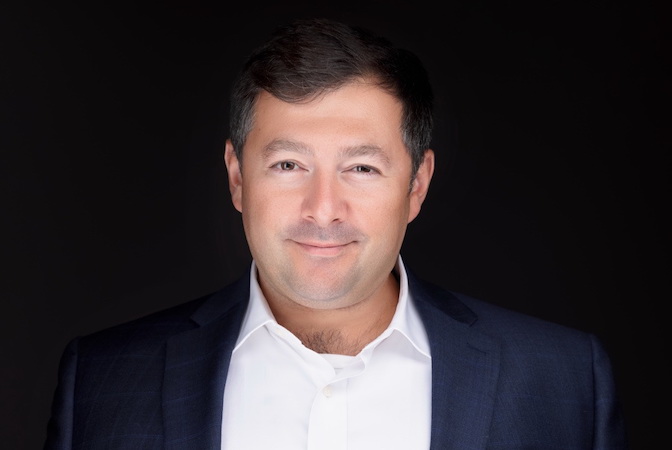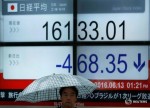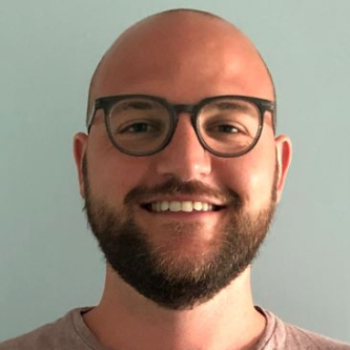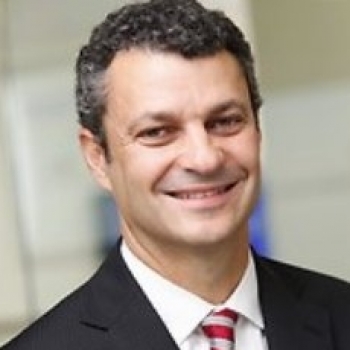
- All Instrument Types
- Indices
- Equities
- ETFs
- Funds
- Commodities
- Currencies
- Crypto
- Bonds
- Certificates
Please try another search

Navigating the Hidden Crisis: Insurance Protection Gap Amid Major Insurers’ Withdrawal
Flood Risk Solutions, led by Executive Chairman Eugene Podokshik, commits to protecting communities and ensuring a more sustainable future for the insurance industry.
Homeowners are finding themselves more vulnerable as traditional insurers retreat from high-risk markets. Escalating natural disasters, rising construction costs, and the unpredictable nature of climate events have prompted many to reevaluate their exposure. Eugene Podokshik, co-founder of Flood Risk Solutions, Inc. (FRS), expounds on this instance that has left critical gaps in coverage and affected millions.

Eugene Podokshik, co-founder of Flood Risk Solutions, Inc.
Major insurers withdrawing from high-risk markets has severe implications for homeowners. For example, in Florida, the frequency and severity of hurricanes, increasing construction costs, and fraudulent claims have led to a crisis in the state’s home insurance market. California’s insurance market has similarly been disrupted. However, the factors driving this retreat are more complex.
Adding to the problems is the increasing cost of reinsurance—a critical safety net for primary insurers. Reinsurers are wary of mounting losses from natural disasters. Hence, they’ve tightened their underwriting criteria, further inflating premiums.
What’s the outcome? Homeowners who once had multiple carriers vying for them are now left with fewer choices and at unaffordable price points. Many of them, especially those in middle- and lower-income brackets, regard the cost of insurance as a financial burden. Moeller shares that as pricing has more than doubled in the high-risk area, some homeowners go without coverage, making them vulnerable to catastrophic losses. Homeowners insurance is not compulsory by statute but is required by all lenders. If there is no mortgage on the property, some homeowners calculate it’s worth the risk to go without insurance and the US Census identified that almost 38.5% of the US homes do not have a mortgage.
Podokshik’s expertise allows him to shed light on the broader impact of the insurance crisis. Over two decades in the sector has made him a well-respected figure in risk management and policy innovation. He founded several insurance-related companies including a commercial retail insurance agency (acquired by PCF 2020), and co-founded with Brendan Moeller an Insurtech general agency Flood Risk Solutions and Parametric Risk (acquired by XPT 2024) which distributes insurance products through thousands of agents and brokers.
He shares that besides affecting homeowners, rising insurance costs lead to declining property values. This is an inevitable byproduct of potential buyers becoming wary of high insurance costs and overall financial risks. Lower property values, in turn, reduce local tax revenues, impacting municipal budgets and essential public services.
In addition, communities without adequate insurance struggle to recover after disasters. Businesses that can’t afford coverage may also close permanently, leading to job losses and weakened local economies. The burden shifts to government programs and places additional strain on public resources.
Podokshik sees the current trajectory of the insurance industry as unsustainable. “We need to move the market in the right direction—one that ensures homeowners, insurers, and communities can navigate the growing risks ahead,” he remarks. The FRS Co-Founder, therefore, advocates for a systemic approach to stabilizing the insurance market. He proposes establishing a think tank in collaboration with private insurers, insurance commissioners, and agencies focused on mitigation. This initiative would explore solutions using advanced technology, loss prevention strategies, new capital investments, and risk sharing with the public.
One of Podokshik’s suggestions to such a think tank if one is to be developed, is to allow for carriers to continue underwriting insurance for individual homes and businesses but to have the public reinsure the carriers when the losses apply to large areas or exceed a certain financial threshold. The large losses could be borne by the public through the sale of catastrophic bonds or by the purchase of parametric insurance. Without bearing the CAT risk in the high-risk areas, premiums to consumers will become a fraction of what they are, with savings and security stimulating the local economy, reversing the insurance trajectory.
For traditional insurance, “the goal is to bring certainty to the market,” Podokshik explains. “Insurers can price policies more accurately if they have better data and risk assessment tools. More certainty leads to better pricing. This would encourage greater consumer adoption.” The risk would spread more evenly as participation increases, driving down premiums.
“We’ve done this with flood insurance and parametric insurance, and we may do it for homeowners insurance soon,” said Brendan Moeller. “We were an early leader in the growth of the private flood insurance market, we built the first-to-market flood and still subjectively the best insurance multi-rater in 2018, which instantly returns multiple quotes, now with over twenty carriers participants competing for flood insurance business. We even created a widget to let consumers quote and bind flood insurance all by themselves and offer the widget to our agents and to embedded insurance partners. Using our technology, we give carriers risk characteristic certainty and to consumers we give choices, all while reducing the admin burden for the agents, a win-win for everyone,” noted Brendan Moeller.
While they enhance the efficiency of insurance agents and brokers, making it easier for consumers to secure policies that meet their needs, a more united effort is needed to move the overall insurance market in the right direction.
With homeowners’ insurance being at a critical inflection point, Eugene Podokshik stresses that the challenges mentioned above will only intensify without intervention and leave more homeowners uninsured and communities vulnerable. He calls for all stakeholders to work together to create a more stable and sustainable insurance market by leveraging technology, improving accessibility, and advocating for systemic reforms.




